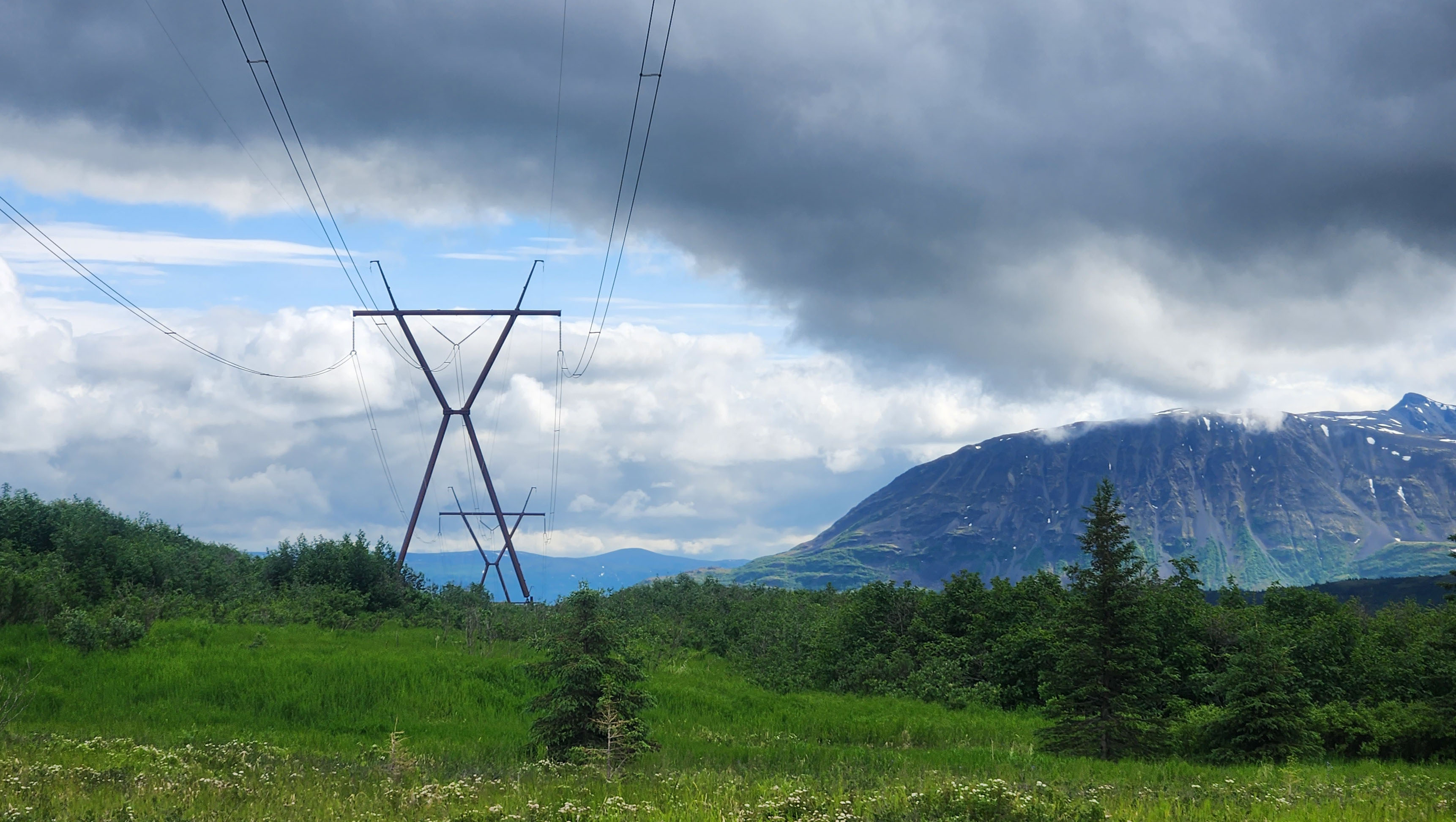Research center outlines ways to decarbonize Railbelt electric system
Amanda Byrd
907-978-0305
Jan. 17, 2024

The Railbelt intertie, a power transmission line that connects Southcentral and Interior Alaska, passes through the Hurricane Gulch area.
University of Alaska Fairbanks researchers have released a study of options to greatly reduce carbon emissions from electricity generation in Alaska’s Railbelt region by 2050.
Researchers with UAF’s Alaska Center for Energy and Power analyzed four scenarios that use a combination of upgraded transmission lines, hydro projects, wind, solar and battery capacity:
- Business as usual: Relies on existing power plants with some new fossil fuel units. Renewables contribute 11% of energy, requiring a capital investment of $2.3 billion.
- Wind/solar/hydro: Introduces large-scale hydro, wind and solar projects, with renewables generating 88% of energy. Capital investment increases to $11.8 billion.
- Wind/solar/tidal: Integrates tidal power, wind and solar, achieving 70% renewable energy. Capital investment is $7.7 billion.
- Wind/solar/nuclear: Incorporates small modular nuclear reactors, wind and solar, resulting in 96% zero-carbon generation. Capital investment reaches $10.1 billion.
Railbelt electricity demand in 2050 is expected to reach 1,626 megawatts, more than double the 2021 level, the researchers reported. The increase will be driven by population growth and new loads such as electric vehicles and heat pumps.
Meeting demand in 2050 with 70-95% carbon-free generation, the report said, would
require a mix of firm dispatchable generation sources, including fossil fuel, hydro
or nuclear, combined with significant wind and solar capacity.
The cost of low-carbon power would be comparable to continued reliance on fossil fuels,
albeit with a structural shift from fuel to capital and operations, researchers said.
A low-carbon grid in 2050 requires careful consideration of grid operations, increased power flows and challenges related to maintaining stability and reliability, the researchers said. Extensive use of batteries and fossil fuel generators would be necessary to manage load fluctuations from intermittent wind and solar output.
The full report, titled “Alaska’s Railbelt Electric System: Decarbonization Scenarios For 2050,” is now available on the ACEP website.
The study was funded by the Office of Naval Research and state of Alaska. Railbelt utilities and the Alaska Energy Authority played a vital role in the research. Telos Corp. supported modeling and analysis.
CONTACT: For more information, please contact Frana Burtness-Adams at Information Insights, comment@iialaska.com or 907-450-2459.
116-24


